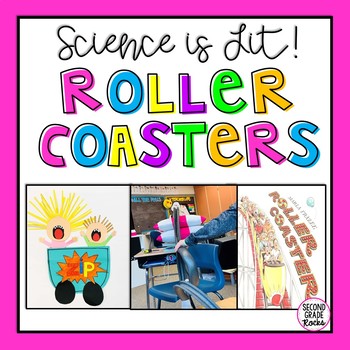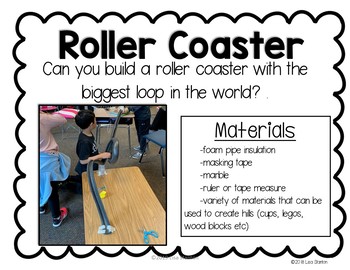Marble Roller Coaster {Stem Project for Force and Motion}
Lisa Stanton
839 Followers
Grade Levels
2nd - 4th, Homeschool
Subjects
Resource Type
Standards
CCSS2.MD.A.1
CCSS2.MD.D.10
CCSSCCRA.L.5
Formats Included
- PDF
Pages
44 pages
Lisa Stanton
839 Followers
Description
Marble Roller Coasters should be a STEM project for all classrooms!! Students love learning about force and motion with roller coasters. This will be your students’ favorite science project hands down (or up as the case may be).
Onomatopoeia and roller coasters go together like peanut butter and jelly. Boom! This activity will get your kids pumped up for learning by integrating onomatopeias, data analysis, graphing and the physics of force and motion. Students will learn that Science is LIT as they use literature to help bring science to life!
- Suggested Teaching Plan
- NGSS Standards
- Book and website recommendations
- Create a class bar graph
- Analyze and interpret the class data
- Label for ‘Emotions’ anchor chart
- Label for ‘Onomatopoeia’ anchor chart
- Onomatopoeia example poster
- Onomatopoeia QR activity with Safeshare link to video
- Roller Coaster Onomatopoeia craftivity
- Roller Coaster (force and motion) vocabulary
- Marble roller coaster directions
- Bulletin board letters
- Sample bulletin board to display all your students awesomeness!
♥♥♥Let's Get Social♥♥♥
Total Pages
44 pages
Answer Key
N/A
Teaching Duration
N/A
Report this resource to TPT
Reported resources will be reviewed by our team. Report this resource to let us know if this resource violates TPT’s content guidelines.
Standards
to see state-specific standards (only available in the US).
CCSS2.MD.A.1
Measure the length of an object by selecting and using appropriate tools such as rulers, yardsticks, meter sticks, and measuring tapes.
CCSS2.MD.D.10
Draw a picture graph and a bar graph (with single-unit scale) to represent a data set with up to four categories. Solve simple put-together, take-apart, and compare problems using information presented in a bar graph.
CCSSCCRA.L.5
Demonstrate understanding of figurative language, word relationships, and nuances in word meanings.





